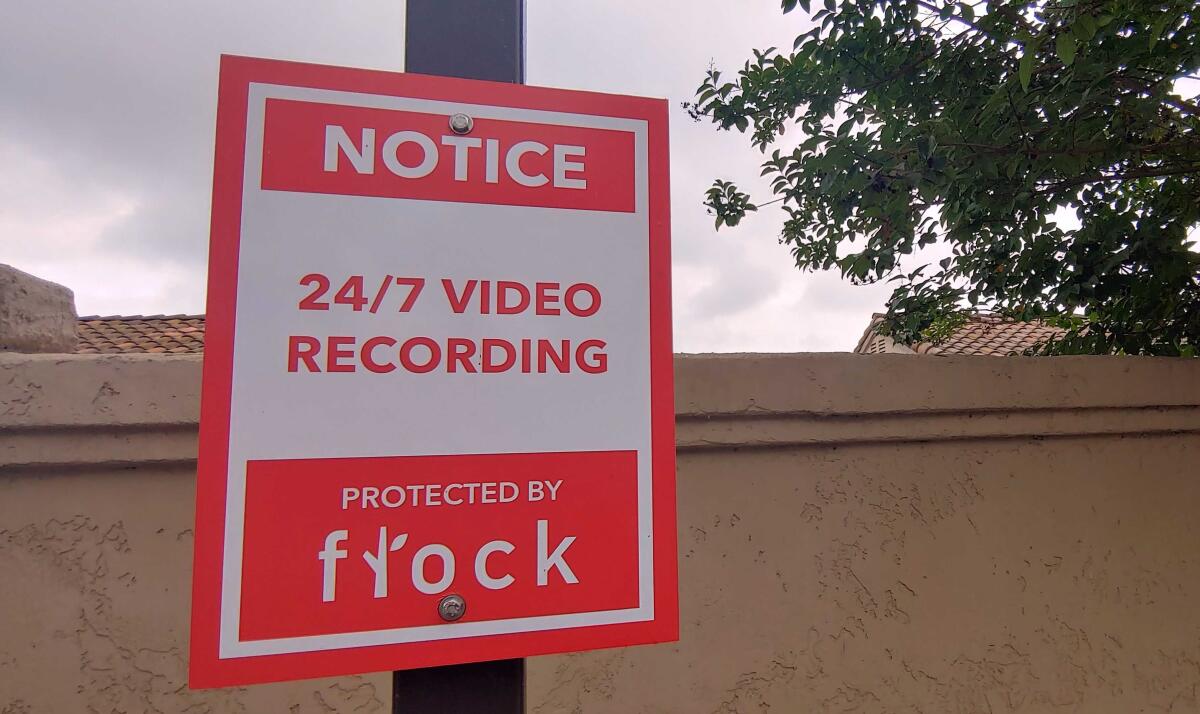City Council approves installing 37 license plate reader cameras in town

To help sheriff’s deputies combat crime and track the movement of suspects inside city limits, the La Cañada Flintridge City Council approved Tuesday spending $78,800 to install 37 automated license plate reader cameras at key locations in town.
Council members unanimously approved entering an agreement with Atlanta-based Flock Safety for the purchase of the cameras, at an annual rate of $2,000 per unit, and a one-time pole installation charge of $4,800.
Assistant City Manager Carl Alameda explained the fixed-position cameras would be placed at various intersections and entrances into the city, where they would capture still images of up to two unidirectional lanes of traffic and catalog the license plate data of passing vehicles.
The solar-powered devices would also be able to read temporary paper license plates and generate real-time alerts to the Crescenta Valley Sheriff’s Station regarding plate numbers associated with illegal activity, including stolen vehicles and license plates, Amber alerts and outstanding warrants.
“Typically, from the time the image is recorded in the field until it shows up at your local station, the lag time, is anywhere from 15 to 40 seconds,” Alameda said.
Images of vehicles with no license plates or numbers obstructed from view would also be sent to the station.
Information would be stored for 60 days in a searchable database law enforcement personnel could use to track the routes of suspect vehicles as part of their investigations into local crimes.
Mayor Pro Tem Greg Brown acknowledged residents may have concerns about privacy but said people driving in public don’t have a reasonable expectation of privacy anyway.
He called the cameras a “force multiplier” for the sheriff’s station.
“Suddenly there are 37 cameras looking for bad guys 24 hours a day, and those deputies on duty then have 37 sets of eyes,” Brown said. “If you have a full network, you really greatly increase your ability to track down who you’re after.”
Among the proposed 37 locations are Foothill Boulevard’s juncture with Ocean View Boulevard, Hillard Avenue, Verdugo Boulevard, Angeles Crest Highway, Commonwealth and Gould avenues and Oak Grove Drive; Descanso Drive’s juncture with Chevy Chase Drive, Cornishon Avenue and Verdugo Boulevard; and locations along Berkshire and Crown avenues, La Cañada Boulevard and Palm Drive, among others.
La Cañada resident Debbie Johannes — who aired her concerns about the city’s commitment to adequately staffing the sheriff’s department during a Jan. 21 council meeting — said the $78,800 would be better spent directly on increasing patrols.
“It’s not a deterrent to catch [criminals] in the act,” she said of the devices. “If we don’t have the law enforcement to back up an alert that does come across … what good is a camera?”
Johannes said she represented a group of neighbors who drafted a multipronged plan for improving public safety, which she presented to city staff.
Mayor Len Pieroni, who returned to the dais for the first time since suffering a health setback in late December, said he supported the pilot program.
“It isn’t the only tool we have,” he said. “This is one where we can use some technology, [which] seems to get better every year. I think we should do it.”
The cameras will be used in a 60-day pilot program at which point findings on their usefulness will be reviewed. Funds will be dedicated during the city’s midyear budget review process, scheduled for March 2.
